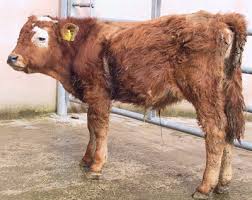Protecting Your BVD Status
6 July 2017With the Scottish beef herd becoming increasing naïve to BVD virus, care needs to be taken when introducing cattle into your herd.
Breeding Herds
Negative breeding herds should currently be testing all cattle coming in from a herd of not-negative status, or from a herd outside of Scotland which is of an unknown status. This is the case unless the animal has already been tested as virus negative.
If buying cattle from outside of Scotland, they can be introduced without testing if the herd is accredited free of BVD as part of a CHeCS accredited health scheme. If not, the bought-in animals will need to be individually tested for BVD virus if this has not already been done. They should be kept in quarantine until they are known to be negative for BVD virus.
Introducing a positive animal into a herd of non-immune animals can have significant consequences. If naïve pregnant cattle are exposed to the virus, then abortion, foetal deformities and persistently infected (PI) calves can occur. Exposure to BVD in any age of naïve animal suppresses the immune system, leaving them very vulnerable to other diseases.
It is worth remembering that if a bought-in pregnant cow tests negative for BVD virus, she may still be carrying a PI calf. Once born, these calves should be tested as soon as possible. Ideally the bought-in cow and calf would be separated from the main herd until the result is known.
The immune system is particularly important in calves, and being in contact with a PI makes them more likely to suffer from scours and pneumonia. BVD can damage the development of the immune system, and so the effects last far longer than the time the calf is in contact with the PI.
Non-Breeding Herds
Non-breeding herds have no obligation to test for BVD in bought-in animals. However, as BVD eradication progresses, and the Scottish breeding herd becomes increasingly naïve, store cattle bought in from Scottish herds are more likely not to have met the virus before. Mixing these cattle with a PI animal puts them at increased risk of disease, because of the suppression of the immune system mentioned above.
In addition, PI animals themselves have poor immunity, and can multiply up viruses and bacteria, spreading infections to other stock. They have a high risk of dying during the fattening process, and so identifying these animals prevents money being wasted housing and feeding these animals.
For these reasons, although it is not a legal requirement for non-breeding herds to know the BVD status of bought-in animals from a herd of unknown status, the economic benefits of doing so will outweigh the costs of testing.
The status of herds and of individual animals can be checked on www.scoteid.com/lookup for Scottish herds. The status of herds which have joined BVD free England can be found on https://bvdfree.org.uk.
Katrina Henderson, katrina.henderson@sac.co.uk
Sign up to the FAS newsletter
Receive updates on news, events and publications from Scotland’s Farm Advisory Service

